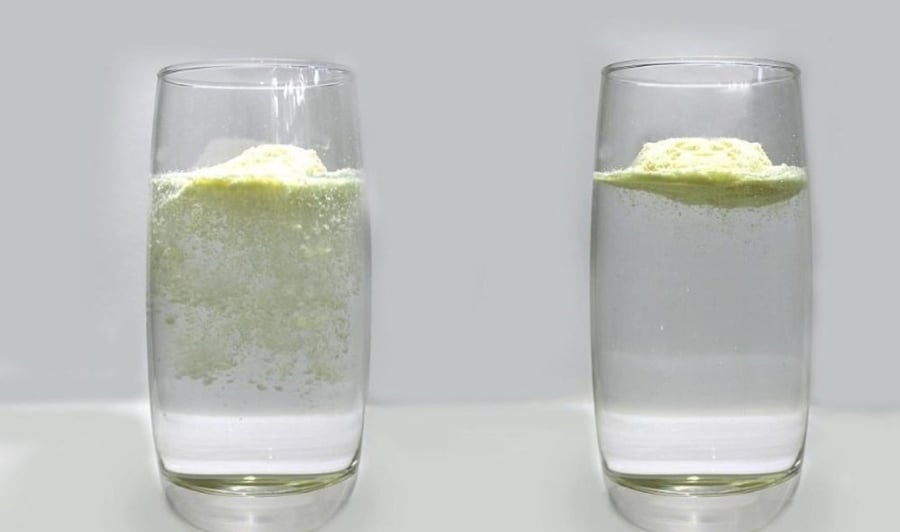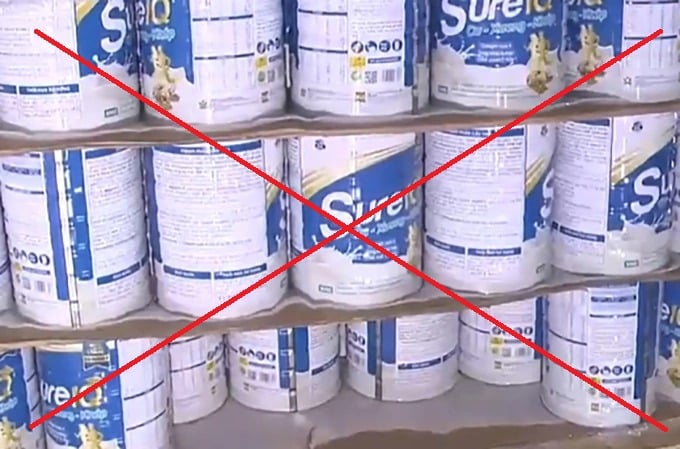The discovery of a fake baby formula manufacturing facility has shocked the public. Authorities raided 19 locations, seizing 84 types of baby formula totaling 26,740 boxes from 90 production batches.
The boxes featured sophisticated packaging, mimicking various renowned brands, but the contents included ingredients of unknown origins. The illegal operation’s revenue was estimated at nearly 500 billion VND over four years.
This incident has caused millions of parents to panic, as counterfeit baby formula is becoming increasingly difficult to identify. Meanwhile, the consequences of consuming substandard formula can severely impact one’s health.
Global Concern: Fake Baby Formula
The World Health Organization (WHO) has issued warnings about the presence of fake or substandard baby formula in multiple countries, particularly in the Asia-Pacific region, where e-commerce regulation gaps exist.
A study by the Institute of Food Safety and Nutrition in Australia revealed that prolonged consumption of substandard baby formula poses risks of liver and kidney damage, immune system deficiencies, and physical and intellectual developmental delays in children.
Moreover, if the formula is cross-contaminated, contains impurities, or includes banned substances such as melamine, as seen in the 2008 Chinese scandal, the consequences can be fatal.
5 Ways to Spot Fake Baby Formula
Dr. Julia Evans, a nutritionist from the British Dietetic Association (BDA), shares: “Counterfeiters prey on consumers’ bargain hunting and lack of vigilance. However, with a keen eye, you can spot anomalies in the product from the very first use.”

Here are five signs that Dr. Evans urges parents to watch out for:
-
Scrutinize the Packaging
Counterfeiters often mimic the real deal with impressive accuracy. However, upon closer inspection, you may find subtle differences, such as blurry printing, faint or blurry fonts, a fuzzy logo, missing or misaligned anti-counterfeiting holograms, or peeling stickers. Details like barcodes and expiration dates may also be printed incorrectly or blurred.
-
Authenticate with Security Features
Many reputable baby formula brands now incorporate security measures such as QR codes, SMS verification codes, or reflective holograms. Consumers should utilize these features to verify the product’s authenticity. If the system indicates “does not exist,” reports a duplicate code, or fails to recognize the code, discontinue use immediately.
-
Observe Smell, Color, and Solubility
Genuine baby formula typically has an off-white or light yellow color and a mild, characteristic aroma. When mixed with warm water, it dissolves evenly without forming lumps. Counterfeit formula often has a faint fishy or foul odor, a pale white or overly dark color, poor solubility, and leaves behind noticeable residue.
-
Monitor the Drinker’s Reaction
If, after switching formulas, a child exhibits diarrhea, vomiting, redness around the mouth, reluctance to feed, or failure to gain weight, the product’s quality should be questioned. While this doesn’t always indicate fake formula, it’s a warning sign that warrants attention.

-
Purchase from Reputable Sources
Dr. Robert Simmons, a food safety expert at Yale University, advises: “The vast majority of counterfeit products are sold through unofficial channels: individual shops on social media, unregulated e-commerce platforms, or unofficial importers without proper invoices.”
He recommends buying formula only from reputable stores, authorized distributors, or large supermarkets that offer guarantees and provide valid receipts.
According to a survey by Consumer Health Review (UK), 83% of parents cannot identify fake baby formula from its packaging alone. This is why many families unknowingly use counterfeit products for extended periods.
“Cheap prices don’t equate to savings,” emphasizes Dr. Evans. “If fake formula causes your child to become malnourished, suffer digestive issues, or require medical treatment, the cost will be far greater.”
In Vietnam, many parents still opt for unofficial imports and online discounts while paying less attention to invoices and test reports, creating an environment where the fake formula market continues to thrive.






























